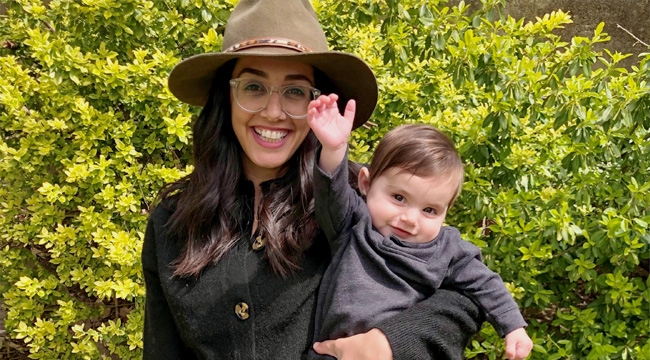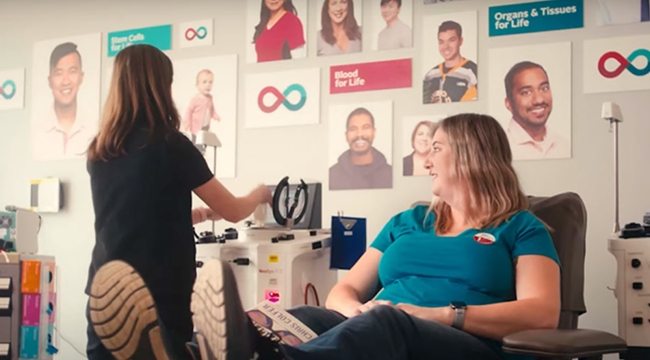Family marks stem cell transplant anniversary with appeal to donors
Youngest child Elsa Norton received stem cells and many blood transfusions
Every day when Scott and Nadine Norton look at their 11-year-old daughter Elsa, they are grateful to the dozens of blood donors and the stem cell donor who helped her beat bone marrow failure.
“Gratitude isn’t enough for the blood donors and the German woman who saved Elsa’s life,” says Nadine, who lives in Peterborough, Ont.
When Elsa was born in 2009, her bone marrow wasn't producing enough platelets, and she also didn’t have enough red blood cells. Platelets are tiny blood cells that help the body form blood clots to control bleeding. They are released if an injury or blood loss occurs, to prevent excessive bleeding.
At six weeks of age, Elsa began visiting Toronto's SickKids Hospital because she had become ill. By 10 months old, she required blood transfusions every one to two weeks to stay alive. She soon became a candidate for a stem cell transplant as that was her only hope of survival.
Stem cells, specifically blood stem cells, are immature cells that can develop into any cell present in the bloodstream. They are found in the bone marrow as well as circulating blood, and can be used to treat more than 80 blood cancers and disorders. For stem cells to be transplanted successfully, donor and recipient must be a close genetic match.
Elsa’s road to recovery

Elsa Norton, seen here five months after her stem cell transplant, is holding a clown she received from her German donor. Elsa spent the first months of her life battling bone marrow failure at Toronto’s SickKids.
Elsa’s journey to recovery was long and hard for her parents and three siblings. Tests revealed that none of them were a stem cell match for the little girl. While close relatives are often genetically similar, only 25 per cent of patients find a match within their own families. That’s why every year, hundreds of patients in Canada turn to Canadian Blood Services Stem Cell Registry. The registry has access to a pool of nearly 460,000 potential donors in Canada, and another 38 million worldwide.
“Elsa’s only chance for a cure had to come from a stranger because none of us were a match,” says Nadine. “And we were lucky when a match was found for Elsa in faraway Germany, right when she turned one.”
Preparation for the transplant was gruelling, with chemotherapy to wipe out Elsa’s immune system in order to prepare her for the transplant. She had the procedure on October 16, 2010. Recovery was difficult as well. Elsa experienced many complications post-transplant, which continued until she was nearly four years old.
Honouring Elsa

Thanks to dozens of blood donors in Canada and her stem cell donor from Germany, Elsa Norton is full of life and energy. She’s now in grade 6 at school and loves to dance, longboard, play soccer, hang out with friends and perform in plays.
Scott and Nadine have never stopped thanking the donors that gave their youngest child a fighting chance. Each fall, the family has organized group blood donations and stem cell drives to mark the anniversary of her transplant.
This October, in honour of Elsa, they are organizing group blood donations and stem cell drives in their Peterborough community to encourage as many Canadians to donate blood and join the stem cell registry.
As a result of the physical distancing measures in place, the Norton family is encouraging donors to book appointments to donate blood in honour of recipients such as Elsa, by using the GiveBlood app or by visiting blood.ca/donate.
“We are living proof that blood donations and signing up to join the stem cell registry could save a life,” says Nadine. “Without Elsa’s blood and stem cell donors, she would not be with us today.”
Seeking committed donors and new registrants
As Nadine points out, the first step to saving a life with stem cells is an easy one.
“Joining the stem cell registry involves a simple swab in the cheek,” says Nadine. “But the impact could be huge because the donor gets a chance to not only touch the life of a patient, but their families.”
The COVID-19 pandemic has only intensified the need for new, committed registrants. Border closures and travel restrictions have made it more difficult to transport stem cells, which means patients and transplant centres here in Canada are relying more on donors in this country. Now, more than ever, we need healthy Canadians between the ages of 17 and 35 to join Canadian Blood Services Stem Cell Registry by requesting a stem cell donor swab kit online.
Donating cord blood — the blood that remains in the umbilical cord and placenta after the birth of a healthy baby — is another way to help patients, because cord blood is also rich in stem cells. Expectant mothers delivering their babies in Ottawa, Brampton, Edmonton and Vancouver can donate their babies’ cord blood to Canada’s public cord blood bank.
The need for blood is constant for patients in Peterborough and across Canada. To book appointments to donate blood, download the GiveBlood app, call 1 888 2 DONATE or make your appointment at blood.ca/donate. We also encourage people between the ages of 17 and 35 to join Canadian Blood Services Stem Cell Registry online to get their swab kit delivered in the mail.



